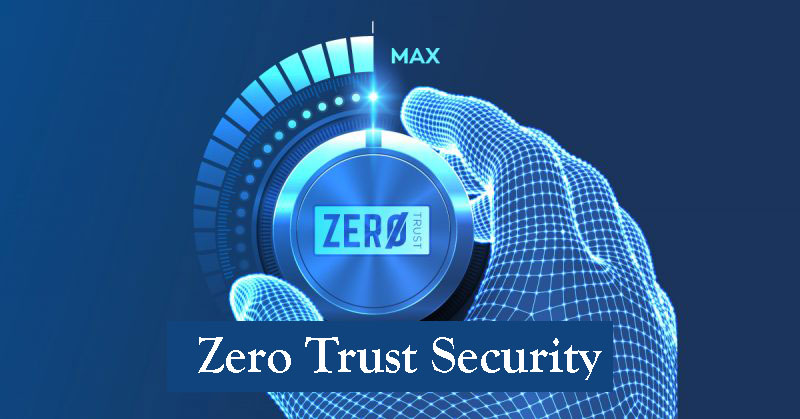
Concern for security is more than evident today since cybercriminals do not stop looking for new attack vectors and new ways to break computer systems, both software and hardware. In addition, on the other hand, we have a struggle by companies to implement new security measures, such as the Zero Trust Security paradigm that we are going to talk about here so that you know what it is about.
You may also be interested in:
- Side-channel attacks: what are they?
- Malware: what it is and its types
What is zero trust security or Zero Trust Security?
Throughout history, companies have relied on very different cybersecurity models, in which they tried to isolate so that anyone outside the perimeter of the corporate network is suspicious and anyone inside is considered intrinsically trustworthy. Therefore, this implies an implicit trust model. But this has ended with very costly leaks, malicious attacks, and other havoc when the cyber attacker breaches that security perimeter.
Therefore, it is now proposed that instead of focusing on the location of connected users and devices, an access method based on identity and roles will be used, regardless of whether they are outside or inside. This is the basic idea of Zero Trust Security.
Therefore, Zero Trust Security constantly uses authorization and authentication on the network, rather than just assessing the perimeter. This model also restricts potential insider threats when a legitimate account is compromised. In this way, better results are achieved, limiting access to privileged data to only a group of users.
The truth is that the concept of zero trust has existed for more than a decade, but currently, it has evolved and has become popular to bring considerable improvements to current cybersecurity problems.
Why is the zero trust model important?
During the confinement, there were many employees who worked from home, as well as students who used online teaching platforms, etc. During this period, there were many data breaches that cost companies huge amounts of money. Therefore, the need for better cybersecurity for remote access was stimulated.
Traditionally, companies have been depending on technologies such as firewalls, or the use of a VPN for remote access. However, this is not without problems when VPN login credentials fall into the wrong hands.
In addition, the edge-based model was designed for a time when few users needed remote access and organizational resources resided locally in the company’s private hub. Now these resources are often scattered across third-party data centers, blurring the perimeter as it was traditionally known.
In short, the legacy approach to cybersecurity is becoming less and less effective due to new needs and emerging technologies. Therefore, it has ceased to be efficient and has become dangerous, which is why the Zero Trust Security model needs to be implemented to improve current security.
Adopting the Zero Trust Security model favors:
- Better protection of sensitive data
- Compliance audit support
- Reduced risk of non-compliance and time to detection
- network traffic visibility
- Better control in cloud-based environments
- Micro-segmentation, a fundamental principle in cybersecurity to isolate resources and avoid lateral attacks
How does access work in Zero Trust Security?
In zero-trust models or ZTNA (Zero Trust Network Access) access, there will be a trusted controller or agent that enforces the access policies pre-established by the organization or service and denies the connection between users and applications in other cases. The software will identify users by their ID and role, as well as other possible parameters (geographical location, time, etc.).
Thus any context outside of that would treat it as suspicious and deny it, even if it is a request from an authorized user. Additionally, once authenticated and connected, users will only be able to view the applications or access the data they are authorized to access, not all network resources. The rest will remain hidden from the user.
Zero Trust Security Planning
Security experts have agreed on what the Zero Trust Security approach should look like, although it is often difficult to implement in practice. But many companies and organizations planning to adopt the model should consider the following challenges :
- Mixing zero trust and implicit trust models can leave security gaps. And this is important when the transition between a traditional trust framework and a zero trust framework is difficult.
- It can cause problems with legacy technologies that are not ready for Zero Trust Security. Therefore, it can cause a lot of headaches for hardware and software administrators and technicians.
- Sometimes the implementation covers the entire IT environment, so adoption is not easy or cheap.
- Zero Trust Security strategies depend on how good access control is, therefore good identity, role, and permission management is needed.
- It could lead to productivity issues if user access is unduly hampered.
- You will also need to know the platform to be protected, understand the security controls already in place, incorporate new tools and modern technologies, and apply detailed policy and monitoring and alert systems.
Once all these challenges are known, the zero trust approach can be implemented in the organization keeping the points very much in mind. In addition, skilled personnel are needed in areas such as application and data security, network and infrastructure security, user and device identity, and other security operations.
Once all this has been taken into account, Zero Trust Security approaches can be applied to many cases, from secure third-party access to a service, remote access to networks, security and visibility in the IoT, etc.
Zero Trust Security vs other security approaches
The cybersecurity industry has come a long way in recent years, with many exciting technologies, strategies, and policies. But how do these other approaches compare to Zero Trust Security? Let’s see some cases:
ZTS vs SDP
SDP (Software Defined Perimeter) takes a similar approach to zero trust in that it aims to improve security by controlling users and accessing devices. But unlike ZTS, SPD is an architecture made up of controllers and hosts that control and facilitate communications.
ZTS vs VPN
A VPN or Virtual Private Network is another technology that also shares the same purpose, that of guaranteeing security. But a VPN has proven to be less effective when the number of remote workers and services grows, although they still need to be around to help us stay more secure. In fact, they can be used in conjunction with zero trust.
I also invite you to read our guide with the best VPNs so that you are always protected while browsing.
ZTS vs zero knowledge test
These terms share some similarities, but zero-knowledge proof is a methodology that can be used when one party wants to prove the validity of information from a second party without sharing any information. Cryptographic algorithms based on zero-knowledge proof allow the party that must perform the proof to mathematically prove its veracity. For example, some traditional methods such as 2FA or MFA use this type of zero-knowledge proof.
ZTS vs PoLP
The Principle of Least Privilege, or PoLP, is a security concept that grants users and devices only the access rights they need to do their jobs and nothing more. That includes access to data, applications, systems, and processes. If credentials are compromised, this restriction ensures that the impact is minimal.
Although Zero Trust Security is similar to PoLP in some ways, the main difference is that ZTS also focuses on user and device authentication and authorization.
ZTS vs Defense in Depth
A defense-in-depth security strategy involves several layers of processes, people, and technologies to protect data and systems. This should cover most of the gaps, and may actually be stronger than zero trust because if one layer of security fails, there will be others.
However, Zero Trust Security is usually more attractive. However, including a defense-in-depth principle alongside a zero-trust framework can greatly strengthen security.
Steps to Implement Zero Trust Security
Finally, we must also take into account how a zero-trust policy or Zero Trust Security can be implemented. This may vary depending on the model, but it is based on 7 fundamental pillars :
- User security
- device security
- Workload security
- network security
- data security
- Visibility and analysis
- Automation and orchestration
In addition, it must be taken into account that there are several methods of implementing this type of zero trust security, which can range from some simpler to others more advanced and complex. Once the company or organization is ready to adopt Zero Trust Security, then these steps must be followed for its correct implementation :
- Build the Zero Trust Dedicated Team – The right members must be chosen as this will make the difference between success and failure. That means choosing administrators, technicians, as well as other resources such as tools, adequate network equipment, monitoring, additional security technologies, etc.
- Choose the basis of access: this could vary since some opt for access based on the identity of the user and the device, others on the applications and data handled, and others on the network.
- Evaluate the environment: an audit or analysis of the security controls already implemented must be done. In addition, it would be necessary to verify the level of trust they provide and possible gaps to solve them before it is too late.
- Analyze the available technology: It is important to carry out this other step to see what methodologies and technologies should be developed in the Zero Trust Security strategy.
- Implement zero-confidence measures.
- Define operational changes: It is important to document and evaluate any changes in operations, as well as modify or authorize processes when necessary.
- Adjustments – As zero confidence measures are implemented they should be evaluated for their effectiveness and adjustments made if necessary. Then start the process again…
Do not forget to leave your comments with doubts or suggestions…
